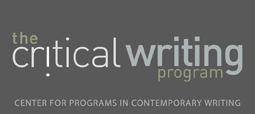Statistics
An Overview of the Discipline
Statistics is traditionally defined as the study of collecting, organizing, interpreting, and making inferences with numerical data. The main divide in statistics is between more theoretical branches and branches that focus on practical applications, such as causal inference, for example.
Writing in the Discipline
Reasoning
Scholars must explain their findings as objectively as possible to underscore the correctness of their work, and writing in statistics is explanatory in this regard. However, there are elements of persuasion or justificatory reasoning because you have to convince readers of why your paper is important and worth reading. The introduction thus assumes an important role and is often a key factor in whether or not a paper will get published in a journal.
Evidence
Statistics is both data-based and text-based, but tends toward the former. Statistics fields that rely on data are those that deal with direct applications, such as research in biology, for example. The discipline is text-based in the sense that statisticians may read journals to gain ideas and understanding of what has been done by others in the field before them; you search for inspiration of what is unknown, which you then set out to investigate. However, it is fundamentally quantitative and thus data driven. In practical applications of statistics, though, it may be the people who the statistician collaborates with in the other disciplines who physically collect the data.
Authorship
Statistics can be both individualistic and collaborative, but is usually representative of the latter. While some people work alone, others work in small groups, and others in larger groups. There is also collaboration in the sense of collaborating across fields in more of the application-based areas of statistics, such as when a statistician will collaborate with a biologist, for example, to provide analysis of an experiment. Even when people work alone, they tend to discuss their findings with the select few whom they trust.
Goal
The principal goal of statistics is problem definition and solution. While some problems are defined, most of statistics begins first with defining the problem, and also defining why it’s interesting. Convincing the audience of why your paper is worth reading is critical. The writing in statistics has a very specific audience, first consisting of those in your specific statistical field, but then the audience for “greater” statisticians is much larger. After defining the problem, the focus shifts to devising a new and innovative method to solve it.
Writing Tips
Top Criteria in Student Papers
Since content is the focus in statistical writing, reasoning and evidence are most important; organization also takes a central role, as it promotes the clarity of ideas. Finally, demonstrating mastery of ideas - or having original ideas, depending on the situation - is also one of the top 3 criteria.
Common Errors
Errors are typically related to content, organization, and, occasionally, style.
Claims
Formal mathematical proofs are accepted as undisputed evidence. However, arguments about what constitutes valid evidence emerge with the use of computer simulations. Many people are uncomfortable with computer simulations because they don’t want to assume that theory will work in practice. This feeling of uncertainty increases if the models or simulations are based off specific data, as it raises the question as to whether the model will be applicable to all situations. Moreover, when creating these models, it is necessary to make certain assumptions, but oftentimes these assumptions are violated.
Style Preferences
A key focus is on ensuring clarity; there is a fairly standard structure to statistical research papers to ensure that the readers’ attention is on the ideas being presented as opposed to the way in which they present them.
Genre
Student Assignments
Writing is not often assigned at the undergraduate level in statistics.
Professional Writing
"Publish or perish” is a saying in the field that alludes to the focus on publishing papers in journals. Other types of writings include theorem-proofs and books. Grant-writing is often common as well.
Additional Resources
Wayne Booth, Gregory Colomb, and Joseph Williams' The Craft of Research© 2013-2014 The University of Pennsylvania
Meet the Professors

Dr. Mark Low
The first part of the writing process is to explain and develop the theory in writing. More...

Dr. Dylan Small
In his students' writing, the top three criteria Professor Small looks for are: reasoning and evidence... More...
